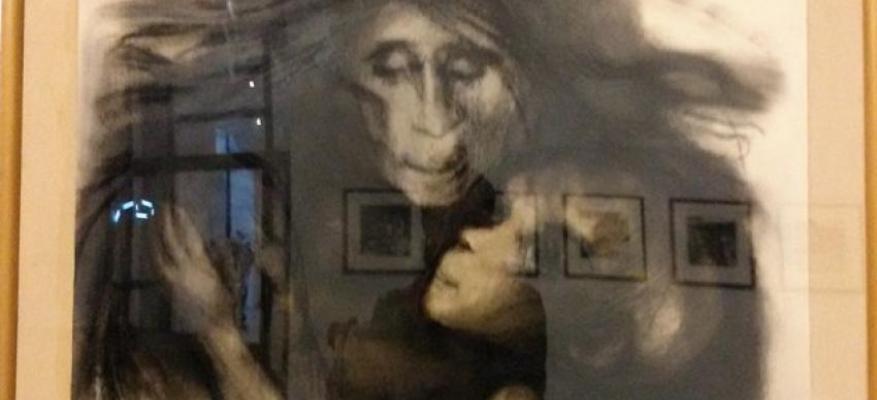
 by Silvia Bartolotti
by Silvia Bartolotti
In this uncertain beginning of spring, there is an alternative way to spend a Sunday afternoon in town. The exhibition “Divided Memories 1940-1950” is organized by the Goethe-Institut and theJewish Museum of Thessaloniki in the Macedonian Museum of Contemporary Art.
During the 1940s Greece was first subjected to a brutal Nazi occupation, and then laid to waste by three years of civil war. Though the hard times didn't keep the artists of the time from painting. On the contrary, the turbulent period served as inspiration to dig inside the darker aspects of mankind.
As I passed through the exhibition rooms of black and white pictures of dead bodies and grim impressionist paintings I was paralyzed in front of a series of depictions, bright like children cartoons but drenched in horror and violence.  These macabre scenes are that of Nazi soldiers, deported men on trains to their death, torture and bombings so much in contrast with the artistic style used from the painter that emphasized even more the horrible shock that he had to suffer. Actually that man was Frederick Carabott, the graphic designer that made his fortune during the 60's with the vintage posters of Greece, the ones that we can still see hung in some fancy restaurants around Europe as well as in old houses overlooking the Aegean sea.
These macabre scenes are that of Nazi soldiers, deported men on trains to their death, torture and bombings so much in contrast with the artistic style used from the painter that emphasized even more the horrible shock that he had to suffer. Actually that man was Frederick Carabott, the graphic designer that made his fortune during the 60's with the vintage posters of Greece, the ones that we can still see hung in some fancy restaurants around Europe as well as in old houses overlooking the Aegean sea.
Despite his roaring adulthood Carabott was just 17 years old when the German Army occupied Athens and the war perturbed his adolescence bringing him even in prison camps in Greece, France and Germany. The way he paints Nazi soldiers shows the trauma that the Frederick teenager lived, drawing them with metal plates instead of face, metaphor of their total lack of humanity. The executioners are like robots in his mind as well as their victims look all the same with no facial features, no expressions and their fear so big that the only possible defense was to undress of all their feelings trying to survive.
On the other side he portrays himself as a white figure appearing in the crowd, making coffins, staring at Hitler's portrait in a night interrogation, letting Jewish friends in front of the Dachau gate and saying goodbye to his family from a German truck on his way to hell. Conversely to all the other people the members of his family, who desperately run behind the Nazi truck, seem still have human features: a hat, an headband and the handkerchief wore by his mother. Maybe a sign of hope, of familiar, of willingness to come back. As he finally did, filling with emotions this early spring Sunday's trip.

